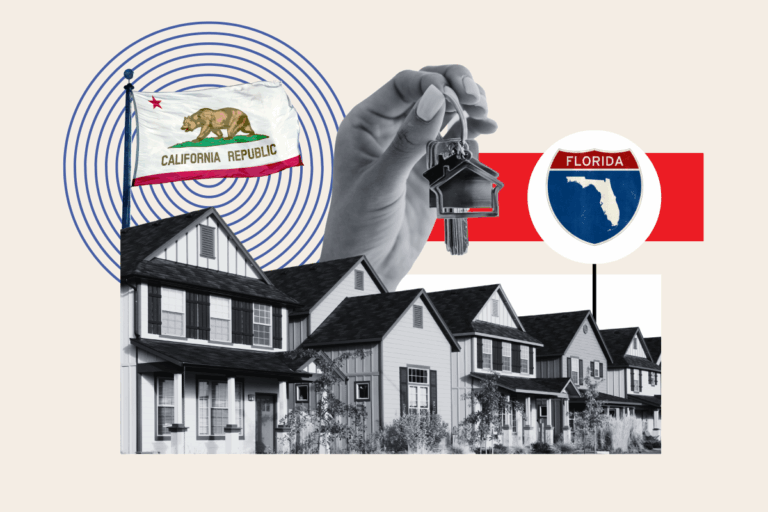Homeowner Insurance Crisis: California and Florida’s Different Paths
California and Florida have long been indicators of the homeowner insurance crisis that experts warn may soon spread nationwide. These two states, prone to different natural disasters, have seen homeowners insurance premiums skyrocket as carriers raise rates or cut coverage in vulnerable areas.

The crises in California and Florida share a common factor: both are vulnerable to natural disasters, with wildfires in California and hurricanes in Florida. The pool of available insurers has shrunk in both states as carriers have dropped policies to avoid enormous claims. Homeowners are left with limited options, forced to choose between paying thousands in insurance or “going bare,” risking everything should a disaster strike.
Florida’s ‘Manmade’ Crisis
Florida’s homeowner insurance crisis is attributed to “manmade factors of legal system abuse and claim fraud, not storm losses,” according to Mark Friedlander of the Insurance Information Institute. Excessive litigation, widespread fraud, and increased risk from natural disasters have driven up premiums, making Florida one of the most expensive states for homeowner insurance.
Between 2019 and 2024, homeowner insurance rates in Florida rose by 42.5 percent as multiple carriers left the state or cut coverage. The state’s insurer of last resort, Citizens, grew to a record 1.4 million policies in 2023, raising concerns about its ability to pay claims after a major disaster.
Florida has stabilized its insurance market through tort reform measures introduced between 2022 and 2023, which have led to a 40 percent year-over-year decline in new property claim lawsuits in 2024. The average home premiums declined by 0.7 percent statewide in the fourth quarter of 2024, the first drop in nearly a decade.
California’s Regulatory Challenges
California’s crisis is driven by the growing risk of devastating wildfires and blamed on state regulators for creating conditions that led to major insurers’ withdrawal. The state’s “antiquated regulatory environment” prevented insurers from correctly factoring in climate risk or reinsurance costs into premiums.
As a result, “Californians are paying artificially low home premiums that are not actuarially sound,” Friedlander said, leading to private insurers pulling back and a record growth for the California FAIR Plan, the state-backed insurer of last resort. The FAIR Plan’s total exposure reached $529 billion as of December 2024.
The California Department of Insurance is implementing a Sustainable Insurance Strategy that will allow property insurers to use climate risk modeling in their future pricing. Two major California home insurers have announced their commitment to grow market share because of this strategy.
Different Approaches to the Same Problem
Both states have created “backstops for the industry” but with different approaches. Florida has actively pursued depopulation policies, moving customers from Citizens to private insurers, while California is trying to keep insurers in the state and ensure access to the marketplace.
Experts criticize both approaches, suggesting that neither state has used the authority of the state Legislature to dictate the terms of how and where to build. Both states have been reluctant to influence local land use and zoning decisions, which is seen as crucial to managing risk.
The homeowner insurance crisis in California and Florida highlights the need for comprehensive solutions that address both the insurance market and land use policies. As the situation continues to evolve, other states may look to these two examples for guidance on navigating similar challenges.


